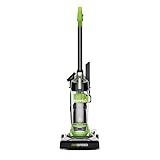Tomatoes are a staple ingredient in many dishes, but preserving their freshness can be challenging.
Vacuum sealing has emerged as a popular option for prolonging the shelf life of various food items. But can you vacuum seal tomatoes?
In this article, we delve into the possibilities of vacuum sealing tomatoes, discuss the benefits and drawbacks, and ultimately answer the question.
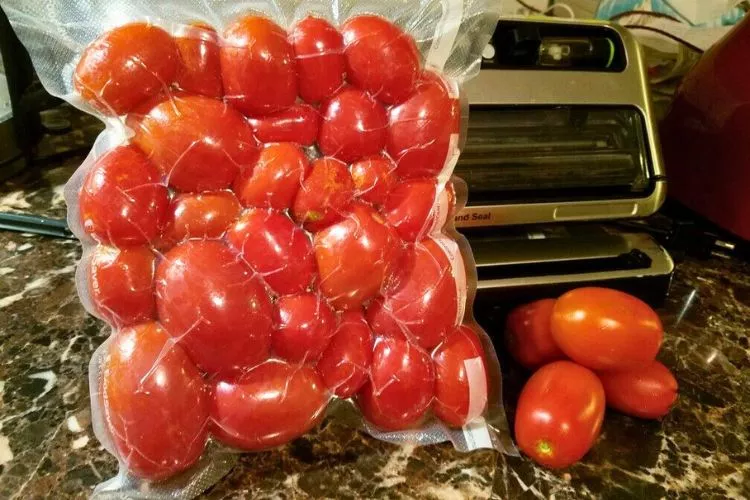
Quick Recommendations
Last update on 2025-10-24 / Affiliate links / Images from Amazon Product Advertising API
Can you vacuum seal tomatoes?
Yes, you can vacuum seal tomatoes. However, it’s essential to note a few things. Raw tomatoes, when vacuum sealed and placed directly in the freezer, can become mushy once thawed due to their high water content.
To avoid this, blanch or cook tomatoes before vacuum sealing; this will help maintain their texture even after freezing.
Alternatively, you can freeze the tomatoes initially, then vacuum seal them and return to the freezer for ideal long-term storage. Done correctly, vacuum sealing can prolong the life of tomatoes while retaining freshness and flavor.
Can you vacuum seal green tomatoes?
Certainly, you can vacuum seal green tomatoes. Like their ripe counterparts, green tomatoes can be sealed and stored for later use. This practice is especially helpful if you have an abundance of unripe tomatoes at the end of the season.
However, remember that the texture might not be the same as fresh ones when you thaw them due to their high water content.
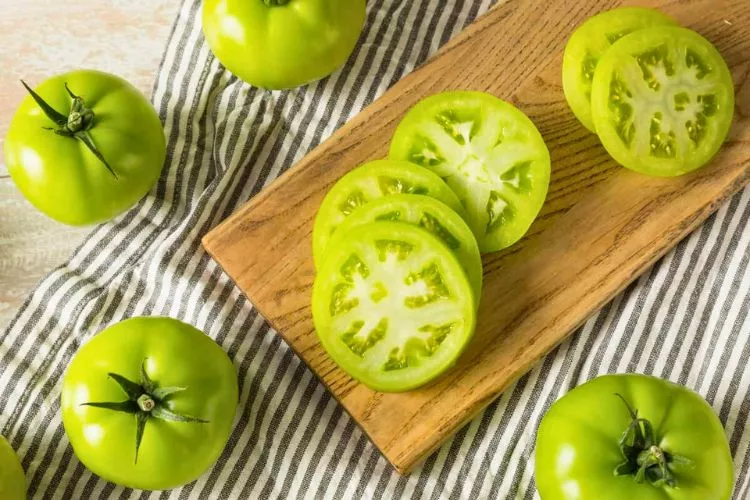
Consequently, it’s crucial to appropriately blanch or freeze these tomatoes before vacuum sealing. Overall, preserving green tomatoes is convenient and possible with vacuum sealing, allowing you to use your crop fully, no matter the season.
Can you vacuum seal sliced tomatoes?
Yes, you can vacuum seal sliced tomatoes. This method allows for extended storage while preserving the freshness and flavor of the tomatoes. Depending on storage conditions, vacuum-sealed tomatoes can last up to 12 months.
Once vacuum-sealed, tomatoes can be stored in various forms, such as whole, sliced, or even pureed. However, take note of the texture changes that could occur due to the high water content of tomatoes.
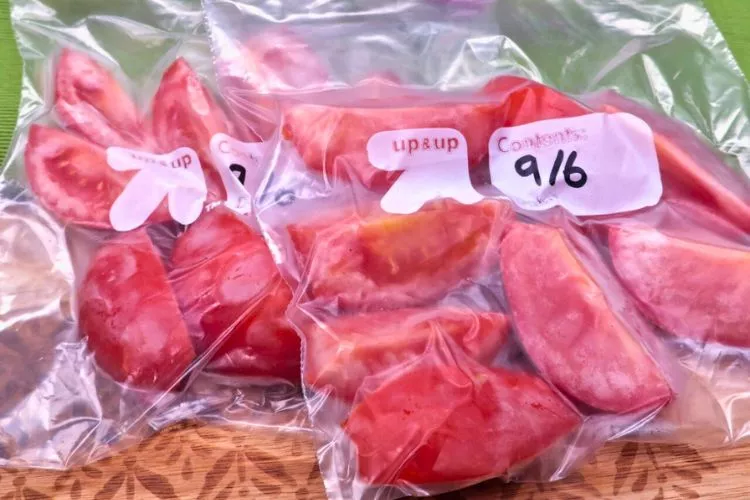
Therefore, whether you’re dealing with whole or sliced tomatoes, vacuum-sealing is a viable preservation method. However, techniques such as blanching before sealing or freezing before vacuum sealing might be used to preserve the texture of the tomatoes.
Can you vacuum seal diced tomatoes?
Sure, you can vacuum seal diced tomatoes. Vacuum sealing is suitable for various forms of tomatoes, including dice. An optimal method for preserving tomatoes, vacuum sealing maintains freshness and flavor for longer periods.
You might consider freezing the diced tomatoes before vacuum sealing to prevent a mushy texture upon thawing. Properly sealed tomatoes have an extended shelf life, lasting up to 12 months. It’s a handy technique to preserve peak season tomatoes in your favorite recipes year-round.
Can you vacuum seal tomatoes in a jar?
You can vacuum seal tomatoes in a jar. The vacuum sealing process involves packing items, in this case, tomatoes, into containers or canisters and then removing all the air before sealing.
This technique keeps the tomatoes fresh and prevents spoilage. When using a jar for vacuum sealing, Sterilize it first and place the tomatoes in, leaving a bit of space between the food level and the lid.
However, it’s important to note that the jar-sealed tomatoes might not keep their fresh texture upon thawing due to their high water content. Hence, techniques like blanching or freezing before sealing might be used to maintain the tomatoes’ texture.
Can you vacuum seal tomatoes to freeze?
Yes, you can vacuum seal tomatoes to freeze them. This is a popular method to preserve the freshness and flavor of tomatoes. However, given their high water content, the texture of thawed tomatoes could be mushy unless prepared correctly.
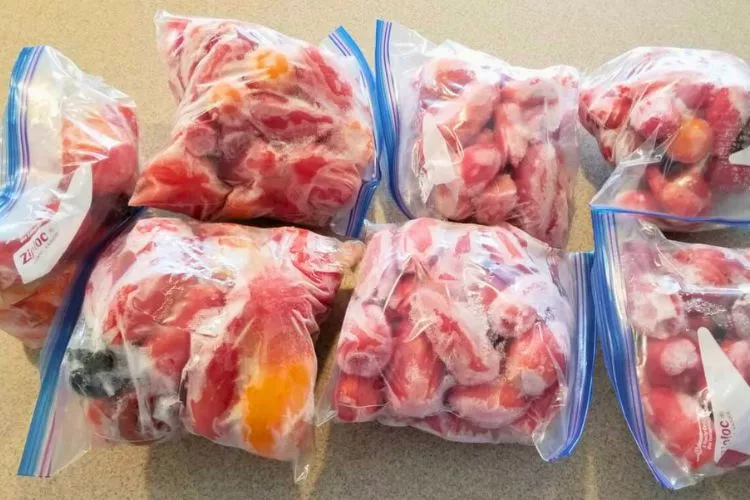
One recommended preparation technique is to pre-freeze the tomatoes before vacuum sealing. You could also opt to blanch the tomatoes first. To blanch, drop tomatoes into boiling water for 60-90 seconds, and using a slotted spoon, quickly transfer them into a bowl of ice water.
Then, arrange the tomatoes in a single layer on a baking sheet and freeze until solid4. Once frozen, you can vacuum seal and store them in the freezer.
While the vacuum sealing process helps prolong tomatoes’ shelf life, remember to label your packages so you will know when they were preserved.
What are the disadvantages of vacuum sealing food?
While vacuum sealing is a great way to preserve food and extend its shelf life, it does come with some disadvantages determined by research:
- Risk of Anaerobic Bacteria Growth – While vacuum sealing prevents oxygen from causing food spoilage, it can also create an environment for anaerobic bacteria, which thrive without oxygen.
- Potential for Plastic Poisoning – Plastic can release toxic substances when sealed or heated, which can contaminate the food stored inside.
- Inability to Seal Liquids Effectively – Sealing foods with high liquid content can be difficult.
- Not All Foods Are Suitable for Vacuum Sealing – Certain foods are compromised by vacuum sealing, such as soft cheeses, onions, garlic, green vegetables, raw mushrooms, and raw bananas.
- Special Bags Requirement – Vacuum sealing requires special, typically more expensive bags.
- Not Suitable for Delicate Food – Foods that are delicate can be crushed or compressed during the vacuum sealing process.
- Risk of Nutrient Loss – Vacuum sealing food, particularly at high temperatures, could lead to nutrient loss.
To conclude, while vacuum sealing food has benefits, it’s essential to consider these potential disadvantages during the decision-making process.
How do you store fresh tomatoes long term?
Storing fresh tomatoes long term involves a few different methods, each with its own distinct advantages. Here are some strategies for extending the shelf life of your tomatoes:

- Room Temperature: If you have green tomatoes or a variety bred for long storage, such as the Long Keeper Winter Storage tomato, they can be stored at room temperature for over a week.
- Refrigeration: If your tomatoes are fully ripe and you’re not planning on using them immediately, they can be stored in the refrigerator to extend their shelf life. However, you should only refrigerate tomatoes that have reached their peak ripeness, as chilling stops the ripening process.
- Canning: A classic method of preserving fresh, ripe tomatoes is canning them. This works especially well for whole peeled tomatoes you plan to use for sauces, on pizzas, or in stews.
- Storing Cut Tomatoes: If you have already sliced a tomato, you should cover the cut side, wrap it tightly in plastic wrap, and store it in the refrigerator.
Please remember that tomatoes’ texture and flavor might change slightly over the long term, especially if stored in the refrigerator.
Frequently Asked Questions (FAQs)
How long does vacuum sealed fresh tomatoes last?
Answer: Vacuum sealed fresh tomatoes can last up to 2 weeks in the refrigerator, although they may start to lose their fresh texture after 1 week.
How long will frozen vacuum sealed tomatoes last?
Answer: Frozen vacuum-sealed tomatoes can last up to 12-18 months in the freezer.
Is it better to freeze tomatoes whole or chopped?
Answer: It’s usually better to freeze chopped tomatoes because it’s more convenient for future use. However, it can depend on how you plan to use them later.
Can bacteria grow in vacuum-sealed food?
Answer: Yes, certain types of bacteria that thrive in low or no oxygen conditions can grow in vacuum-sealed food.
Is freezing tomatoes better than canning?
Answer: Both methods have their advantages. Freezing is easier and keeps the fresh flavor, while canning can keep it for a longer time but might result in a slightly cooked flavor.
Conclusion:
The process of vacuum sealing tomatoes for preservation is achievable and extends their shelf life significantly. This method is suitable for those wanting to enjoy the fresh flavor of tomatoes far beyond their typical season.
Pre-freezing or blanching tomatoes before vacuum sealing helps maintain texture and flavor. Possible factors to consider include the initial cost of the vacuum sealing system and special bags.
Despite potential challenges such as the growth of anaerobic bacteria, the advantages of this preservation method are compelling, making vacuum sealing a nutritious and cost-effective method to store excess or seasonal tomatoes at home.



